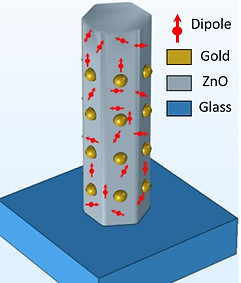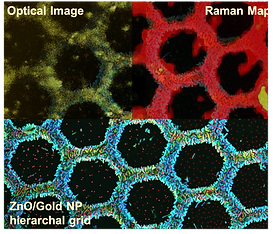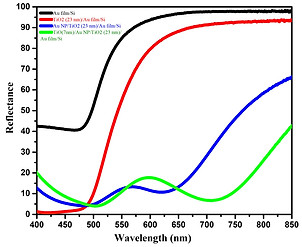Dr. Krishna Nand Prajapati: Postdoctoral Researcher at IISER Berhampur
Research Interest
-
Optoelectronic of semiconducting nanomaterials (ZnO, ITO, and TiO2).
-
Hierarchical plasmonic substrates for advanced Raman imaging.
-
Fabry-Perot cavity modes & plasmonic coupling.
-
Theoretical modeling using COMSOL Multiphysics.
-
2D MXene nanomaterial.

ZnO is a direct band gap semiconductor that emits in the UV due to interband transitions, along with emission in the visible due to defect states. Utilizing ZnO, especially for controlled emission applications, requires spectrally selective emission control and optimization. Inclusion of plasmonic NPs (Au, Ag) can selectively alter the emission properties of ZnO NRs and can be explained by coupled plasmonic and excitonic interactions. Also, incorporating semiconducting quantum dots changes the emission signal of ZnO system depending on the size of quantum dots.
-
The Journal of chemical physics,2021, 152 (6).
-
The Journal of Chemical Physics, 2023, 159 (24) ).
Au NP/ZNR/SiO2/Si hierarchical system to enhance Raman spectroscopic signatures of various analytes, with detection threshold below nanomolar concentrations. The intensity enhancement and engineered spatial segregation of Raman activity to a predesignated pattern, paves the way for obtaining optical Raman images with Raman scattered photons -forging a new route for Raman analysis.
-
Nano Express 3 (3), 035007


The interaction of two optical modes leads to a strong coupling between them and forms hybridized mode. A fabricated Au NP/TiO2/Au film/Si substrate to observe a strong coupling between metal (Au) plasmonic nanoparticles and a Fabry-Perot (FP) nanocavity mode of the TiO2/Au film/Si. A strong coupling between FP nanocavity and localized surface plasmons enhances and splits the plasmon absorption band. The Au NPs are partially embedded into the TiO2/Au-film/Si substrate which increases the coupling strength and also dual splitting in absorption can also be observed.
-
to be submitted